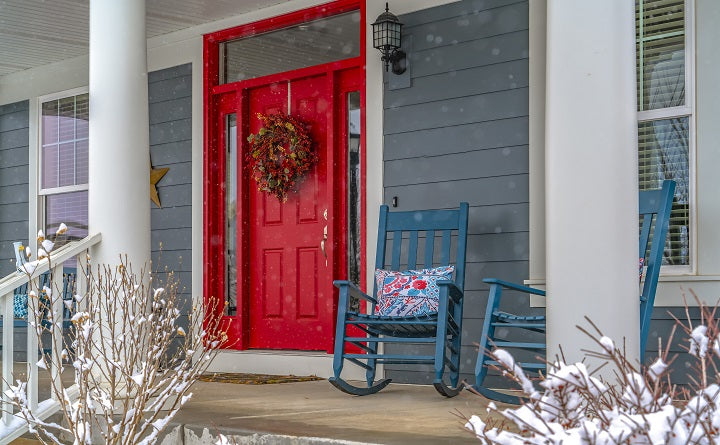Now that December is here, you’ve likely already swapped out the clothes in your closet for your “winter” attire. Your coat’s been cleaned, and your snow shovel and ice scraper are ready to go. Hot chocolate supplies are in the kitchen. But while you may be ready in many respects for the winter weather ahead, have you made sure that your furnace is ready for the low temperatures?
You’ve likely already had your furnace running to keep your home toasty on chilly days and nights. That chilly weather is nothing compared to the strain that the dead of winter can put on your furnace.
Here are some tips to help you make sure your heating system is prepared for the winter weather ahead.
Tip #1: Schedule furnace maintenance!
Before the worst temperatures of winter arrive, schedule a tune-up for your home’s heating system. Many homeowners mistakenly believe that if their heater “seems” to be working just fine and cycling on and off, then they don’t need to worry about any type of maintenance work.
However, we can’t stress enough how crucial it is for you to make an appointment each year to ensure that your furnace is operating safely and efficiently. During a standard heater tune-up with a skilled and experienced technician, he or she will inspect and clean all working components inside the unit. If he or she comes across a potential problem, the issue can be taken care of before it results in a breakdown of your entire heating system — obviously something you and your loved ones would like to avoid!
Additionally, the technician will inspect your furnace for safety issues. If your unit operates on natural gas, he or she will check for carbon monoxide (CO) or natural gas leaks. Also, they’ll check the electrical wiring inside and outside your unit to be sure there aren’t any warning signs of damage, such as fraying. A CO or natural gas leak, or damaged wiring, could lead to a dangerous situation at home.
Tip #2: Perform a visual inspection of all your vents.
It’s important for you to make sure all vents inside your home are free from any obstructions. This means that there shouldn’t be couches, chairs, rugs, curtains, toys, etc. placed on top or in front of them. These items can restrict air flow, causing your furnace to work overtime to keep your space warm and uncomfortable. This could cause premature wear and tear on your unit, not to mention an expensive energy bill.
Also, clean the vents on a regular basis so that they don’t get covered by dirt, dust, or pet hair. These things could also obstruct air flow out of your vents. Not just that, but conditioned air from your furnace that does make its way into your home will be bringing with it the dirt, dust, pet hair, etc., and it could jeopardize your indoor air quality — bad news for anyone in your home with respiratory problems or allergies.
Tip #3: Replace your air filter regularly.
It’s recommended to replace your air filter monthly. The filter’s job is to catch airborne contaminants like dirt, dust, pet hair, and dander. When you don’t replace the filter, it can get full of debris. This prevents your furnace from effectively being able to push warm air out through your home. This could cause extra strain on your heater’s internal components, ultimately leading to a breakdown.
Also, it’s important to change your air filter to prevent indoor air quality issues for your loved ones. Air that does make it through a dirty filter will pick up these airborne pollutants and could cause a variety of health problems for individuals in your home. You may need to change your filter more often if you have individuals in your home who smoke or if you have pets, as these things could cause the filter to get dirty more quickly.
Tip #4: Check your thermostat.
Your thermostat tells your furnace when to cycle on or off based on the temperature you’ve set. If your thermostat operates on batteries, now is a great time to install fresh ones. When your batteries are almost at the end of their usable life, the thermostat may not be able to properly send the right signals to your furnace. This could prevent it from coming on when expected, leaving your family in the cold.
If your thermostat is wired, take the faceplate off the wall and do a visual inspection to be sure that there isn’t any damage to the wiring, such as fraying. If you notice a problem, contact a professional immediately to get it taken care of, as this could be a fire hazard.
Tip #5: Have your chimney inspected.
It’s a good idea to have your chimney looked at this time of year to be sure there isn’t any build-up of soot or outdoor debris. It’s not uncommon for birds, squirrels, and other critters to set up their “homes” inside of your chimney since it’s warm, dry, and seems secure. However, these obstructions in the chimney could cause problems for your furnace’s overall efficiency and also become fire hazards.
Bonus tip!
For extra protection for your furnace, enroll in our Heating Repair Plan. When you’re enrolled in our plan and a covered problem occurs with your home’s heating system, give us a call and we will work with our network of service providers to schedule a time for a professional to come to your home to diagnose and take care of the problem — so your family can be warm and cozy with a functioning furnace once again!


